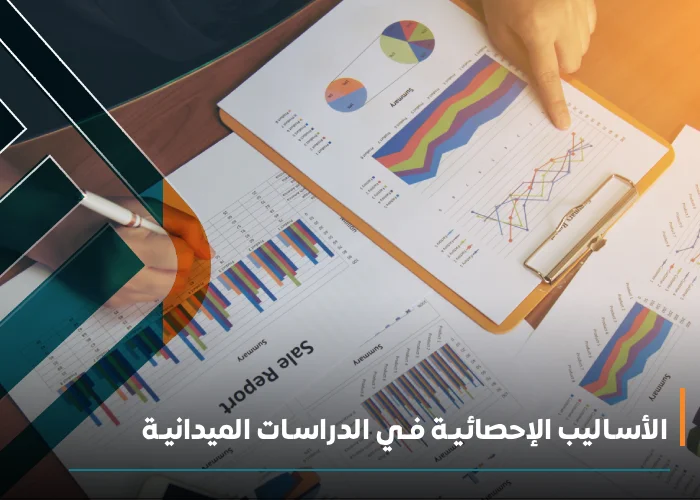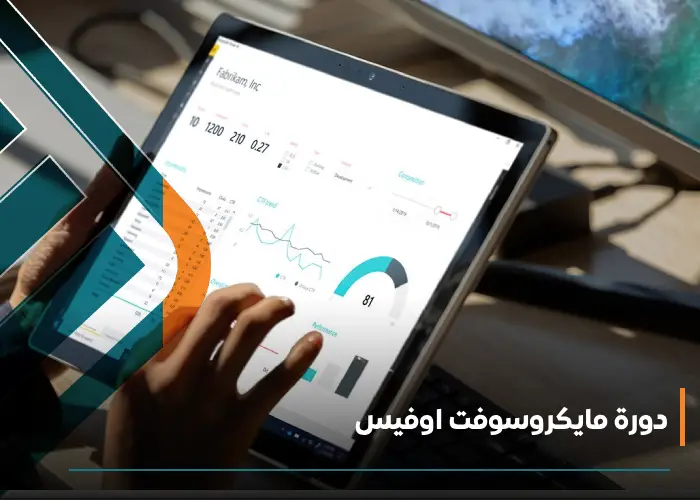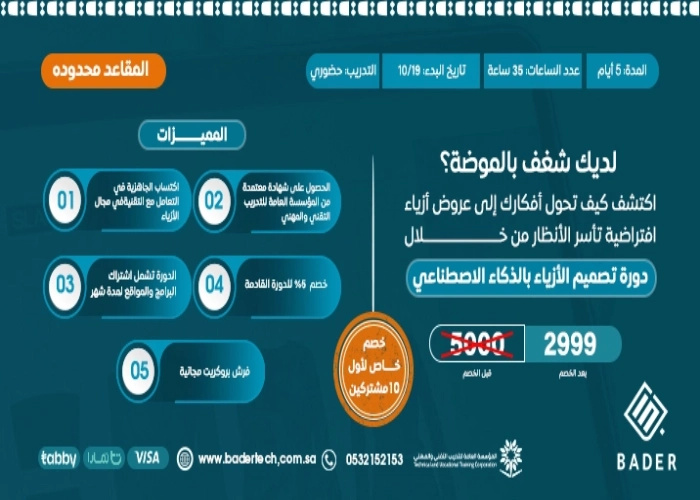Program General Objective:
Develop trainees' skills in conducting statistical surveys using various methods efficiently and effectively.
Capabilities the Program Aims to Develop:
Conducting statistical surveys using various methods efficiently and effectively.
Objectives:
-
Basic principles of preparing and implementing statistical surveys.
-
Comprehensive survey method.
-
Effective partial survey method.
-
Organizing partial samples using Excel.
-
Random sampling using Excel.
Outcomes:
Upon completing the training, the trainee is expected to be able to:
-
Understand the basic principles of preparing and implementing statistical surveys easily and efficiently.
-
Apply the comprehensive survey method with accurate and proficient calculation of key population characteristics using Excel.
-
Apply the partial survey method effectively.
-
Accurately and proficiently estimate key characteristics of the sample population.
-
Accurately estimate the appropriate sample size when using it.
About course
In the world of scientific research and field studies, the design of statistical surveys is one of the fundamental steps to obtain accurate and reliable data. The main goal of statistical surveys is to collect data that can be analyzed to provide scientific insights that support decision-making and policy development. In this course, we will cover the basics of designing statistical surveys, how to prepare questionnaires, and how to choose appropriate sampling methods to ensure the collection of accurate and analyzable data.
In this course, you will learn about different types of statistical surveys such as comprehensive surveys and sample-based surveys, how to define and precisely formulate survey goals, and best practices for questionnaire preparation, data collection using modern techniques, and how to analyze statistical data after it has been collected using statistical software such as SPSS and Excel.
This course is specially designed for researchers and practitioners in the field of statistics and field studies who wish to learn the basics of statistical survey design and develop their skills in collecting and analyzing data scientifically and professionally.
Start now and enhance your skills in designing statistical surveys with this comprehensive course!
Defining and Formulating Survey Goals
Defining and formulating the goals of a statistical survey is a crucial step in designing statistical surveys, as it plays a vital role in collecting and analyzing data accurately. The goal of a statistical survey is to gather analyzable data that contributes to answering research questions and testing hypotheses.
-
How to Define Clear Goals
Before starting any statistical survey, the goals must be clear and well-defined. The first step in goal-setting is to understand the purpose of the study and identify what the researcher hopes to achieve through data collection. Goals should be realistic and measurable so that data can be analyzed effectively after being collected. For example, if the survey aims to analyze customer satisfaction levels, the goal would be to measure customer satisfaction at specific time intervals using specially designed survey tools.
-
Linking Goals to Research Questions
It is essential to link survey goals directly to research questions. Research questions act as the framework that defines how data is collected and the type of questions included in the questionnaire. When formulating goals, they should align with the questions to be answered using the collected data. For example, if the goal is to analyze the effect of training on employee performance, the questions in the questionnaire should focus on aspects such as skill improvement or productivity increase after training.
-
The Importance of Goals in Guiding Survey Design
Goals are what guide the design of the entire statistical survey, from selecting the sample to choosing data collection methods. Goals also help in determining the appropriate tools such as questionnaires, interviews, or field observations. A survey without clearly defined goals may lead to the collection of irrelevant data or distort the results, which negatively impacts the accuracy of the analysis.
If you want to learn how to define and formulate survey goals professionally, Bader Center offers specialized training courses in statistical survey design. Through these courses, you will learn how to define goals accurately and link them to research questions to ensure the collection of accurate and analyzable data. Bader Center equips you with the tools and skills necessary to develop a comprehensive statistical survey design that helps in achieving reliable results.
Start now and enhance your skills in statistical survey design with Bader Center!
Stages of Designing and Implementing a Statistical Survey
Designing and implementing a statistical survey is a methodical process that involves several essential stages to ensure the collection of accurate and reliable data that supports informed decision-making. In this course, we will discuss the stages of designing a statistical survey in detail, from planning to data analysis, ensuring the effective application of statistical methods in field studies.
-
Planning and Managing the Statistical Survey
-
Creating a Timeline for the Survey: The timeline is one of the key factors that determine the dates for data collection, analysis, and report writing. Setting appropriate time for each stage of the survey helps ensure the success of the process.
-
Determining Human and Financial Resources: Human resources (such as editors and monitors) and financial resources required to complete the statistical survey effectively should be determined.
-
Quality Management and Ensuring Data Accuracy: The accuracy of the data is ensured by using statistical tools and techniques to guarantee that the data collection and analysis are precise.
-
Designing the Statistical Form
-
Types of Questions: Closed, Open, and Mixed: The design of the form depends on determining the appropriate types of questions. Closed questions facilitate statistical analysis, while open-ended questions allow the collection of more detailed data.
-
Formulating Questions Clearly and Without Bias: Questions should be phrased neutrally to avoid influencing participants' responses.
-
Organizing the Form to Facilitate Responses and Analysis: Organizing and formatting questions helps in effective data collection and enhances statistical analysis.
-
Statistical Sampling Methods
-
Random Sampling: This method involves selecting a random sample from the target population to ensure a good representation of the data.
-
Stratified Sampling: The population is divided into strata (such as age groups or income levels), and a sample is selected from each stratum.
-
Cluster Sampling: The population is divided into random groups, and a sample is selected from these groups.
-
Choosing the Appropriate Method Based on the Study Type: The most suitable method is selected based on the research nature and available resources.
-
Collecting Statistical Data
-
Training Editors and Monitors: It is crucial to train data collectors to ensure accuracy and neutrality in data gathering.
-
Using Technology in Data Collection: Technological tools help speed up the data collection process and increase its accuracy.
-
Handling Field Problems During Data Collection: Field problems such as participant non-cooperation or registration errors may arise, and measures should be taken to resolve these issues.
-
Processing Statistical Data
-
Cleaning Data and Ensuring Its Quality: The data is examined to remove errors or missing data.
-
Coding and Categorizing Data: Data is organized into categories to facilitate statistical analysis.
-
Using Statistical Software like SPSS and Excel: Statistical software helps in precise and efficient data analysis.
-
Analyzing Statistical Data
-
Using Appropriate Statistical Methods: The data is analyzed using statistical methods such as descriptive and inferential analysis.
-
Interpreting Results and Linking Them to Goals: After analyzing the data, the results are interpreted and linked to the research objectives.
-
Extracting Conclusions and Recommendations: Based on the results, conclusions are drawn, and recommendations are made to aid decision-making.
-
Presenting and Delivering Survey Results
-
Preparing Statistical Reports: After analyzing the data, the report is written and presented in an organized manner that allows the reader to understand the results easily.
-
Using Graphs and Tables: Graphs and tables are used to present the data visually.
-
Presenting Results Clearly and Comprehensively: The results should be presented in a simple and direct manner to ensure clear understanding.
Bader Center: Enhance Your Skills in Statistical Survey Design
If you want to learn how to design statistical surveys professionally, Bader Center offers specialized training courses in statistical survey design, data collection, and analysis. Through these courses, you will learn how to use statistical software like SPSS and Excel, gaining the necessary skills to conduct precise and professional statistical surveys.
Start now and improve your skills in statistical survey design with Bader Center!
Why Choose Bader Center for Statistical Survey Design Courses?
Bader Center is a leading institution that offers specialized training courses in various fields, with extensive experience in developing skills and preparing individuals for the job market. The center provides innovative and comprehensive training programs aimed at achieving excellence and enabling trainees to acquire practical skills that are applicable in professional settings.
Bader Center Advantages:
-
Certified Diplomas: Trainees at Bader Center receive certificates accredited by prestigious international bodies, ensuring global recognition of their skills in statistical, administrative, and technological fields. These certificates open up job opportunities and enhance their credibility in the job market.
-
Job Preparation: Bader Center’s training programs aim to equip trainees with the skills needed to enter the workforce easily. This is achieved through practical training in statistical skills and report preparation, preparing trainees for future roles in scientific research, field studies, and statistical analysis.
-
Ongoing Support: Bader Center provides continuous support to trainees after completing their training, offering career guidance and assistance in entering the job market. The center also provides personalized consultations to help trainees select jobs that align with their skills and experiences.
-
Practical and Real Training: Bader Center’s courses rely on practical training, enabling trainees to apply what they’ve learned in a real work environment. This practical training allows trainees to gain statistical skills using software like SPSS, Excel, and Python, ensuring they learn skills applicable in statistical analysis and scientific research.
-
Experienced Trainers: Bader Center trainers have extensive practical and educational experience in their fields, ensuring high-quality content and focused training that helps trainees achieve their goals. Trainers assist in overcoming challenges and complex concepts in statistical methods.
-
Outstanding Training Environment: Bader Center ensures a comfortable and engaging training environment using modern technologies and advanced training tools, providing an interactive learning experience where trainees participate in discussions and practical applications that encourage creativity.
Bader Center offers integrated training programs aimed at developing skills practically and professionally, providing accredited certifications that open doors to employment opportunities. If you’re looking for high-quality training opportunities that ensure complete education with ongoing support, Bader Center is the ideal choice for you.
Start your journey with Bader Center today and enhance your skills for better career opportunities!


































